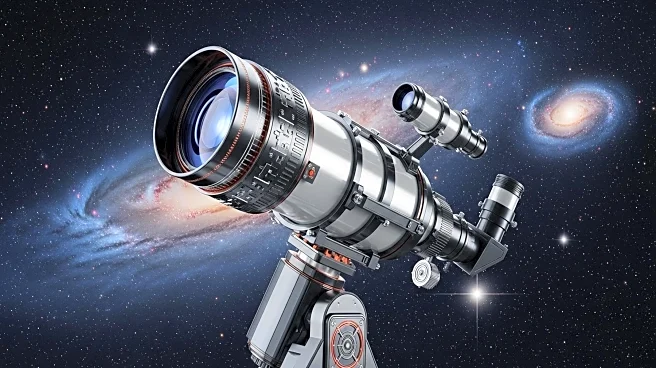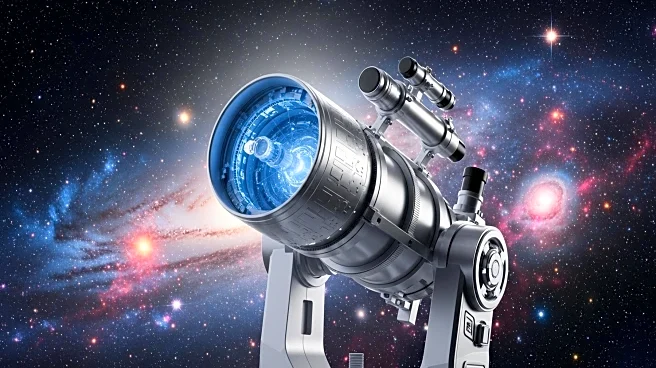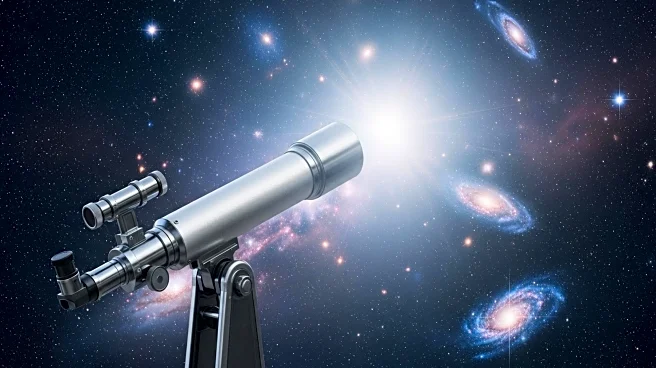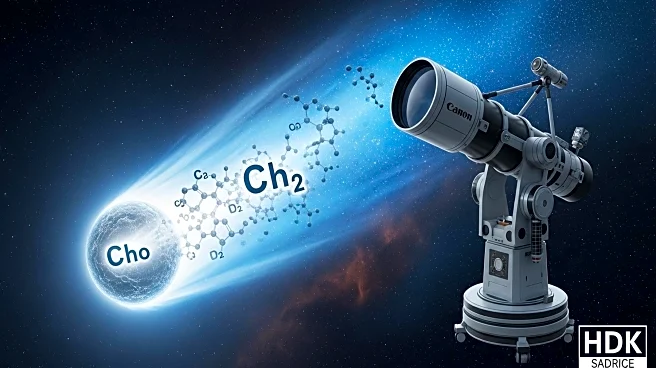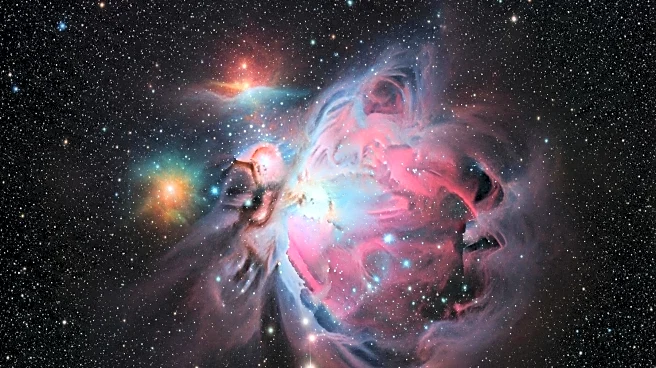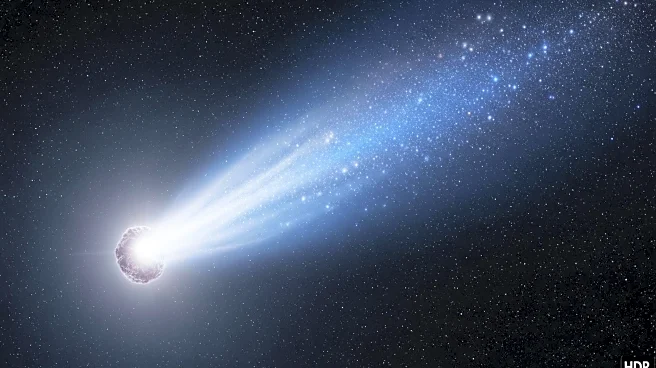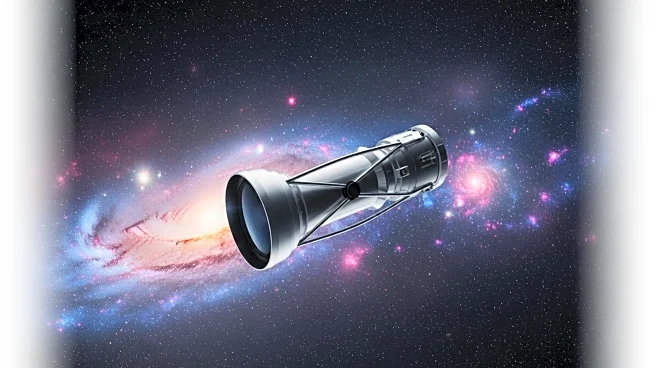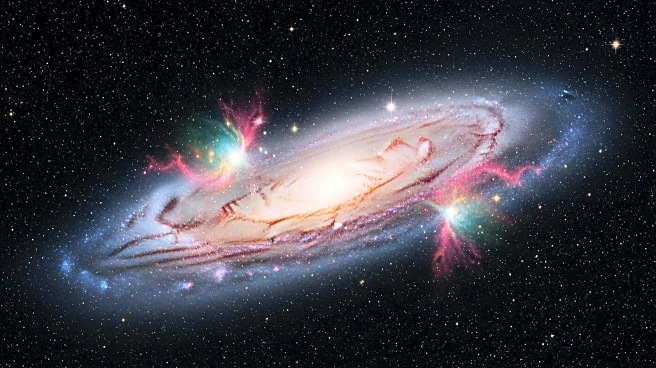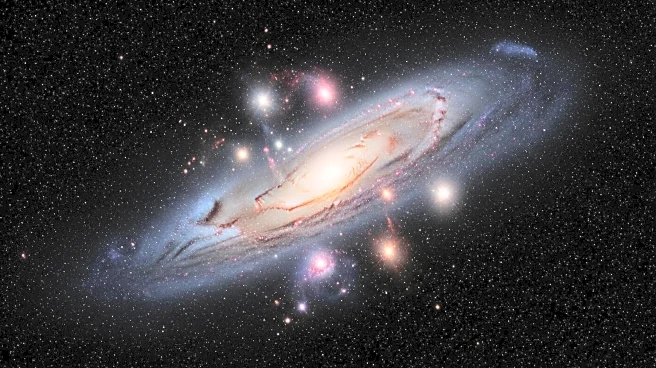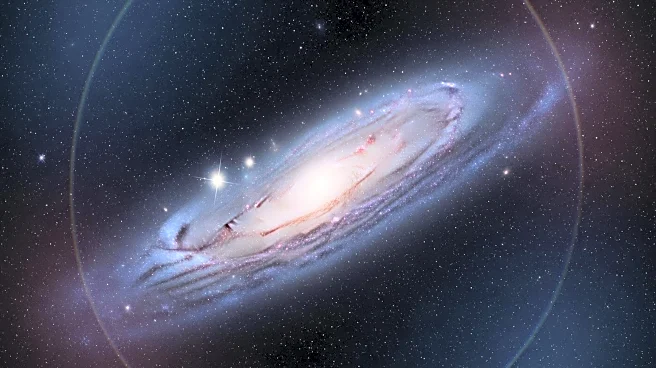What's Happening?
Scientists at the University of Missouri have used NASA's James Webb Space Telescope to identify 300 objects in the early universe that are brighter than expected. These objects are candidate galaxies from the period when the first stars and galaxies began to form. The discovery challenges current theories about galaxy formation in the early universe. Researchers used infrared cameras to detect these high-redshift galaxies, employing a dropout technique to identify objects that appear in redder wavelengths but vanish in bluer ones.
Why It's Important?
This discovery could significantly alter our understanding of galaxy formation and the early universe. If confirmed, these galaxies may require modifications to existing theories, impacting astrophysics and cosmology. The ability to identify and study these early galaxies provides insights into the universe's evolution and the conditions that led to the formation of stars and galaxies.
What's Next?
The final confirmation of these galaxies will involve spectroscopy, which will provide accurate redshift determinations and further details about their properties. This step is crucial for validating the findings and understanding the implications for galaxy formation theories.
